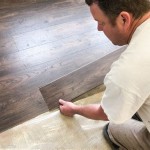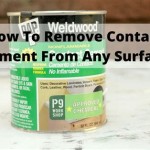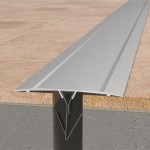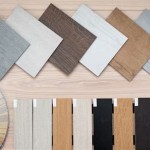How to Lay Tongue and Groove Flooring on Concrete
Tongue and groove flooring, known for its classic aesthetic and ease of installation, can transform a concrete floor into a warm and inviting space. Whether you're aiming for a rustic farmhouse look or a more modern feel, this type of flooring offers a versatile solution for various interior design styles. The process involves careful preparation of the concrete subfloor, precise installation of the flooring boards, and appropriate sealing for longevity. This article will guide you through the essential steps to successfully laying tongue and groove flooring on concrete.
Preparing the Concrete Subfloor
The success of your flooring installation hinges on a properly prepared subfloor. Concrete floors can be uneven, cracked, or dusty, all of which can negatively impact the appearance and stability of your new flooring. The following steps ensure a smooth and level foundation for your tongue and groove boards:
1.
Clean the Concrete:
Thoroughly remove any dirt, debris, dust, or loose particles from the surface. A broom, vacuum cleaner, or damp mop can be used for initial cleaning. For stubborn stains or grease, use a suitable cleaning solution. 2.Patch Any Cracks or Holes:
Small cracks can be filled with a concrete patching compound. Larger cracks or holes may require a more substantial repair using epoxy or concrete patching material. Allow ample drying time before proceeding. 3.Level the Floor:
If the concrete floor is uneven, it's crucial to level it before installing the flooring. A self-leveling compound is an effective solution. Apply it according to the manufacturer's instructions, ensuring even distribution across the entire surface. Allow the compound to dry thoroughly before moving on. 4.Moisture Barrier:
Apply a moisture barrier to prevent moisture from the concrete subfloor from damaging the tongue and groove boards. A vapor barrier, typically a polyethylene sheet, is commonly used. Secure it to the concrete with tape or fasteners. 5.Underlayment:
Installing an underlayment adds cushioning, noise reduction, and insulation to the flooring. Choose an underlayment suitable for your flooring type and the overall requirements of the room.Installing the Tongue and Groove Flooring
Once the subfloor is prepared, you can start installing the tongue and groove flooring. The installation process involves carefully joining the boards, ensuring proper alignment and stability. Here's a step-by-step guide:
1.
Start at a Wall:
Begin laying the first row of boards along one wall, leaving an expansion gap between the boards and the wall. This gap allows for natural expansion and contraction of the wood with changes in humidity. 2.Secure the Boards:
Use a flooring nailer or staple gun to secure each board to the subfloor. Drive the nails or staples into the tongue side of the boards, ensuring they are flush with the surface and do not protrude. 3.Interlock the Boards:
The tongue and groove design allows boards to interlock with each other, creating a tight and secure fit. Ensure that the tongue of each board fits snugly into the groove of the previous board. 4.Maintain Alignment:
As you install each row, use a level and measuring tape to ensure that the boards remain straight and aligned. Avoid gaps or overlaps, as they can lead to unevenness and instability. 5.Cut and Adjust:
You may need to cut some boards to fit around doors, walls, or other obstructions. Use a circular saw or miter saw to make precise cuts. 6.Finish the Flooring:
Once the flooring is installed, use a trim molding to cover the edges of the flooring and enhance the aesthetic appeal.Finishing Touches and Maintenance
After successfully installing your tongue and groove flooring on concrete, there are a few final steps to ensure its longevity and beauty:
1.
Sealing and Finishing:
Applying a sealant to the flooring protects it from scratches, stains, and moisture. Depending on the wood type and desired finish, consider using a polyurethane, wax, or oil-based sealant. 2.Maintenance:
Regularly sweep or vacuum the floor to remove dust and debris. Occasionally mop with a damp cloth and a mild cleaning solution. Avoid harsh chemicals or abrasive cleaners that can damage the finish. 3.Addressing Squeaks:
If the floor starts to squeak, it may be due to loose boards or nails. Use a flooring nailer to re-secure any loose boards or nails. 4.Repairing Scratches:
For minor scratches, consider using a wood filler or touch-up pen to blend the scratch with the surrounding flooring.Laying tongue and groove flooring on concrete offers a rewarding DIY project. With proper planning, careful preparation, and attention to detail, you can achieve stunning results and transform your concrete floors into a warm and welcoming space. Remember, this article provides a general guide; always consult the manufacturer's instructions for specific details and recommendations regarding your chosen flooring materials.

Installing Wood Flooring Over Concrete Diy

Installing Hardwood Floors On Concrete Subfloors

Junckers Laying A Floor Over Batons

Fitting Hardwood Floor To Concrete Wood And Beyond Blog

Tongue Groove Flooring Installation On Underlay Start To Finish

5 Essential Tips For Tongue And Groove Flooring District Floor

Installing Engineered Hardwood On Concrete Twenty Oak

Hardwood Over Concrete Auten Wideplank Flooring

Installing Laminate Flooring Over Concrete The Ultimate Guide Aa Floors

How To Install Oak Hardwood Floors Young House Love
See Also







